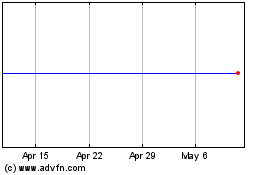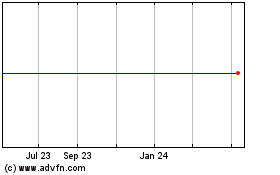UPDATE: BP Starts Work On New Gulf Oil Spill-Containment Cap
July 10 2010 - 4:11PM
Dow Jones News
BP PLC's (BP, BP.LN) effort to contain the oil gushing from the
mile-deep leak in the Gulf of Mexico entered a new stage Saturday,
with undersea robots starting work to install a new, tight-fitting
containment cap on the broken, mile-deep well.
The effort comes more than 12 weeks after Transocean Ltd.'s
(RIG) Deepwater Horizon burned and sank, unleashing the spill
that's fouled the coasts of at least four states and killed untold
numbers of sea creatures and birds. For the past several weeks, a
more loosely fitting cap and companion system have managed to keep
up to about 25,000 barrels of oil a day out of the Gulf. The new
sealing cap-system, expected online within a week, plus additional
measures, will allow the recovery of 60,000-80,000 barrels a day in
two to three weeks, a BP official said Saturday. Scientists have
estimated that between 35,000 and 60,000 barrels of oil have flowed
into the Gulf from the broken well each day.
"Over the next four to seven days, depending on how things go,
we should get that sealing cap on," BP Senior Vice President Kent
Wells said in a teleconference briefing Saturday. Over the next two
to three weeks, "as we start to ramp up the additional containment
capacity, we should see less and less flow.... The intent is to
have the ability to contain all of the flow."
Before the new cap can be put in place, engineers had to remove
the loosely fitting cap that had been collecting up to 15,000
barrels a day. BP spokesman Mark Proegler confirmed that undersea
robots successfully removed the cap at about 12:37 p.m. CDT
Saturday. This means oil is flowing unimpeded from the well head,
though some crude continues to be siphoned via a separate system to
be burned off from a ship on the surface. BP simultaneously is
working to bring online a third containment vessel, the Helix
Producer. Wells said BP should start ramping up oil collection with
the vessel on Sunday, with full capacity reached in about three
days.
Wells added that additional oil-skimming vessels had been moved
into place near the well site while the well head is uncapped. "We
feel we're in a good position to collect the oil very close to the
source, which is always important."
BP, with the approval of the federal government, went ahead with
work to replace the containment cap--even though the Helix Producer
isn't online yet--to take advantage of a week's worth of expected
calm weather. A pair of tropical storms delayed the installation of
the Helix Producer gear over the past couple of weeks.
"I validated this plan because the capacity for oil containment
when these installations are complete will be far greater than the
capabilities we have achieved using current systems," said the
federal government's point man on the recovery effort, Ret. Coast
Guard Adm. Thad Allen, in a press release late Friday.
Although forecasts call for favorable weather over the next
several days, the Gulf region is expected to face a very active
hurricane season. BP noted that such a sealing cap has never been
used at such depths and warned "there can be no assurance" that
it's going to be successfully installed within the hoped-for time
frame. In case something does go wrong with the installation, Wells
said "we always have backups for our backups," such as another
containment device that's already on site and ready for
installation.
While the recovery system with the new cap, if all goes as
planned, could be able to contain all of the oil flowing from the
broken Macondo well, BP and the government have always placed more
faith in the ability of a relief well to finally plug and kill the
leak. BP and the federal government are officially sticking by
their forecast for a mid-August completion of the first of two
relief wells.
The Wall Street Journal reported last week, however, that BP is
pressing to plug the runaway Macondo well by late July, and a
contractor helping BP with the relief-well process said work was
progressing ahead of schedule.
-By Mark Long, Dow Jones Newswires; 212-416-2145;
mark.long@dowjones.com
(Angel Gonzalez contributed to this report.)
Cooper Cameron (NYSE:CAM)
Historical Stock Chart
From Jun 2024 to Jul 2024

Cooper Cameron (NYSE:CAM)
Historical Stock Chart
From Jul 2023 to Jul 2024
